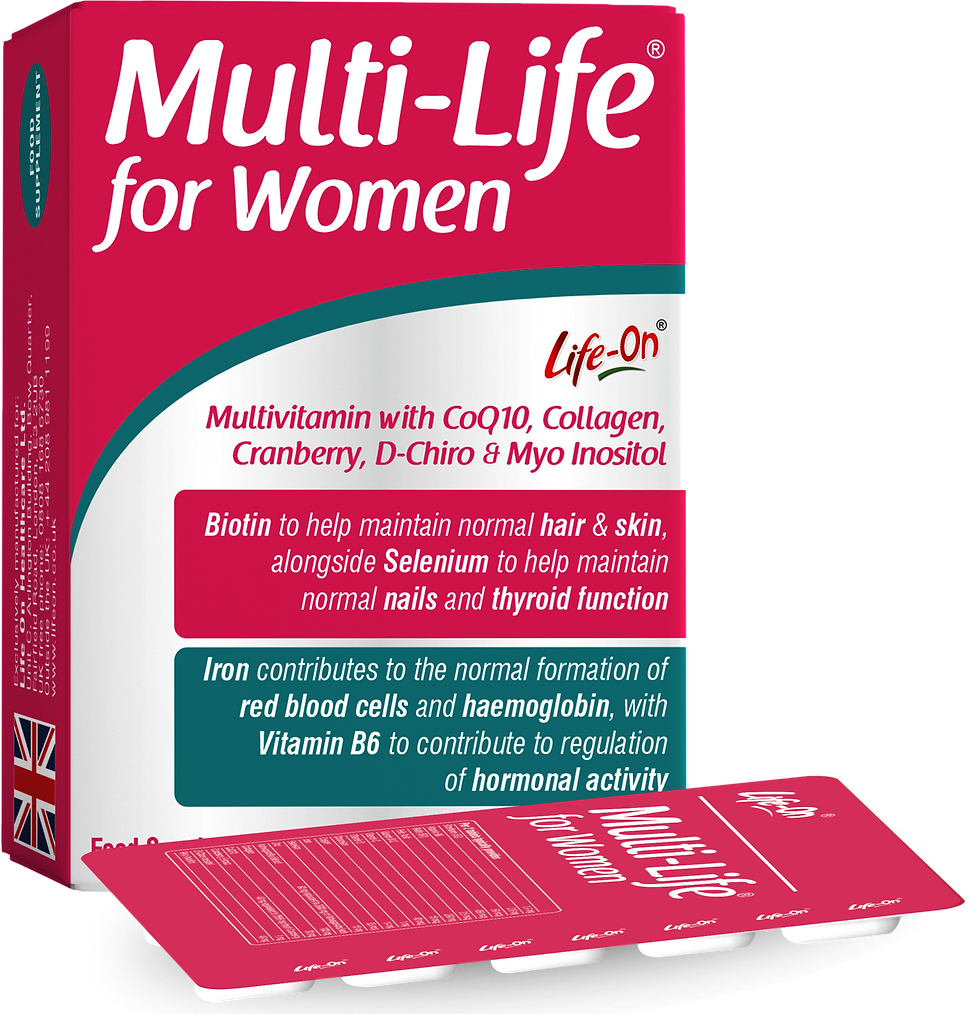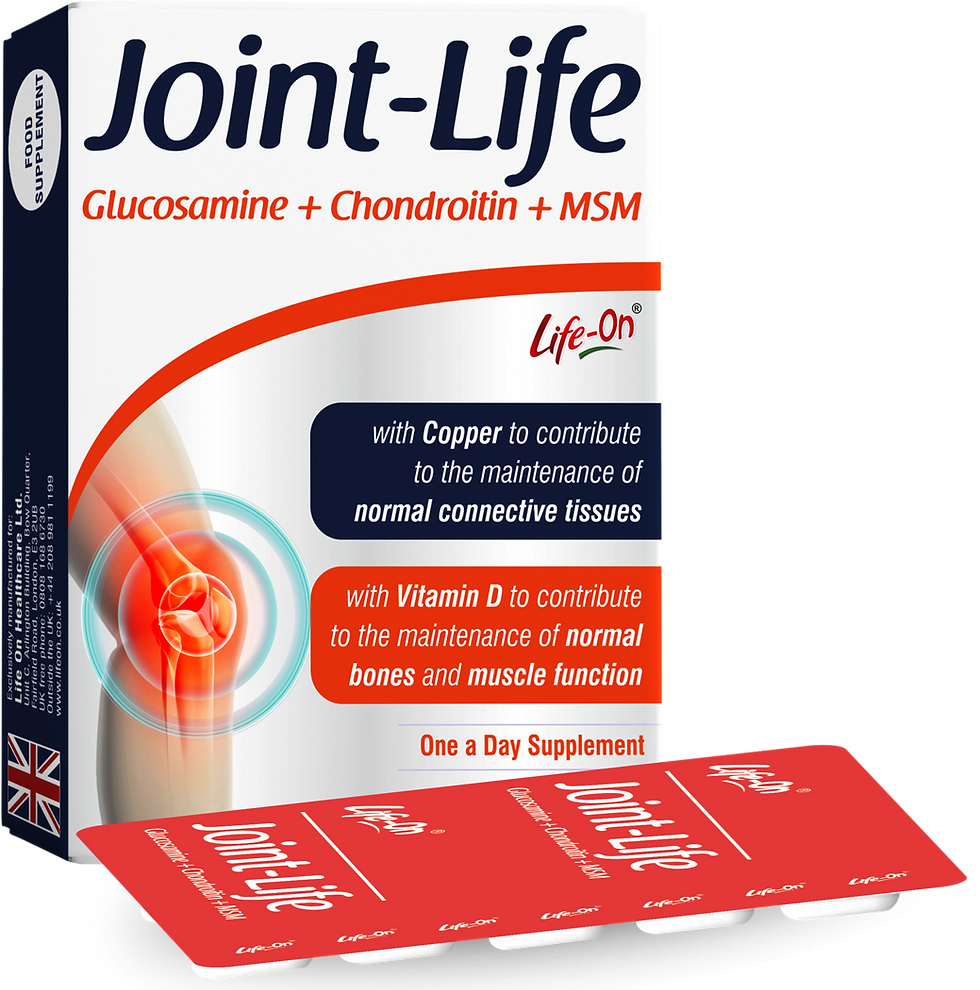Vit D3-Life 25000iu Tablets
Life On Vit D3-Life 25000iu Tablets is a food supplement rich in vitamin D2 and D3 that promotes healthy absorption of calcium and aids normal muscle function.
➢ Aids muscle function
➢ Supports bone health
➢ Promotes absorption of calcium
➢ Contributes to immune system
Vitamin D refers to a group of fat-soluble secosteroids responsible for enhancing intestinal absorption of calcium, iron, magnesium, phosphate and zinc. The most important compounds in this group are vitamin D3 (cholecalciferol) and vitamin D2 (Ergocalciferol). Cholecalciferol can be ingested from the diet and from supplements. Skin is the major natural source of the vitamin D(1). Vitamin D plays an important role in bone metabolism and seems to have anti-inflammatory and immune-modulating properties. Low vitamin D levels are associated with increased overall and cardiovascular mortality, cancer incidence, mortality and autoimmune diseases such as multiple sclerosis**.
Vitamin D insufficiency affects almost 50% of the population worldwide. An estimated 1 billion people worldwide, across all ethnicities and age groups, have a vitamin D deficiency (VDD). This pandemic of hypovitaminosis D can mainly be attributed to lifestyle and environmental factors that reduce exposure to sunlight, which is required for Ultraviolet-B (UVB)-induced vitamin D production in the skin**.
Vitamin D3 is manufactured in the skin by way of ultraviolet (UV) B rays. Vitamin D3 is synthesised from 7-dehydrocholesterol in the skin. The vitamin D binding protein transports the vitamin D3 to the liver where it undergoes hydroxylation to 25(OH)D (the inactive form of vitamin D) and then to the kidneys where it is hydroxylated by the enzyme 1 α hydroxylase to 1,25(OH)D, its active form**.
Why Life On Vit D3-Life?
Life On Vit D3-Life has a unique formula that contains Vitamin D3. Vitamin D also described as “the sun vitamin” is a steroid with hormone-like activity. It regulates the functions of over 200 genes and is essential for growth and development. Vitamin D3 deficiency can result in obesity, diabetes, hypertension, depression, fibromyalgia, chronic fatigue syndrome, osteoporosis and neuro-degenerative diseases including Alzheimer's disease**.
Benefits of Life On Vit D3-Life
Vitamin D decreases cell proliferation and increases cell differentiation, stops the growth of new blood vessels and has significant anti-inflammatory effects**.
Vitamin D3 helps in maintaining normal blood calcium levels and promotes in absorption and utilisation of calcium and phosphorus and enhances the better functioning of the immune system**.
Vitamin D is used for preventing and treating rickets. Vitamin D is effective for preventing and treating rickets. A specific form of vitamin D, calcitriol, should be used in people with kidney failure **.
It also used for treating weak bones (osteoporosis), bone pain (osteomalacia), and bone loss. Taking vitamin D (cholecalciferol) is effective for treating softening of the bones**.
A bone disorder called renal osteodystrophy occurs in people with kidney failure. Taking vitamin D (calcifediol) by mouth manages low calcium levels and prevents bone loss in people with kidney failure**.
Helps in treating hyperparathyroidism and low blood calcium levels due to low parathyroid hormone levels. Low levels of parathyroid hormone can cause calcium levels to become too low. Taking vitamin D (dihydrotachysterol, calcitriol, or ergocalciferol) by mouth is effective for increasing calcium blood levels in people with low parathyroid hormone levels**.
Psoriasis, applying vitamin D or calcipotriene (a synthetic form of vitamin D) to the skin treats psoriasis in some people. Applying vitamin D to the skin together with cream-containing drugs called corticosteroids seems to be more effective for treating psoriasis**.
Age-related macular regeneration High vitamin D blood levels appear to be associated with a decreased risk for the development of early age-related macular degeneration (AMD) among women younger than 75 years**.
**References
- Vitamin D, en.wikipedia.org/wiki/Vitamin_D
- Vitamin D: An Evidence-Based Review, www.jabfm.org/content/22/6/698.full
- Vitamin D: The “sunshine” vitamin, J Pharmacol Pharmacother. 2012 Apr-Jun; 3(2): 118–126.doi:10.4103/0976-500X.95506
- Vitamin D Deficiency- An Ignored Epidemic, Int J Health Sci (Qassim). 2010 Jan; 4(1): V–VI.
- Vitamin D, ec.europa.eu/nuhclaims
- Vitamin D, https://www.webmd.com/vitamins-supplements/
**All information and material provided within Life On Healthcare Ltd. site is for information purposes only and in no way should be construed as medical advice or instruction. The information provided on this site is not meant to be a substitute for the advice provided by your health care professional. No action of any kind should be taken solely on the contents of this site. Consult your physician or other qualified health care professional on any matter regarding your health or wellbeing or on any opinion expressed within this site. The statements made within this site have not been evaluated by the Food and Drug Administration or MHRA. The statements made within are not intended to diagnose, treat, cure or prevent any disease.

















